TABLE OF CONTENTS
Apple’s Mac Mini is, without a shadow of a doubt, one of the most well-rounded (and popular) small form factor computers on the market.
Its small enclosure, respectable I/O, and jaw-dropping looks have made it a mainstay in Apple’s line-up, and the fact that it’s been around for over eighteen years speaks volumes.
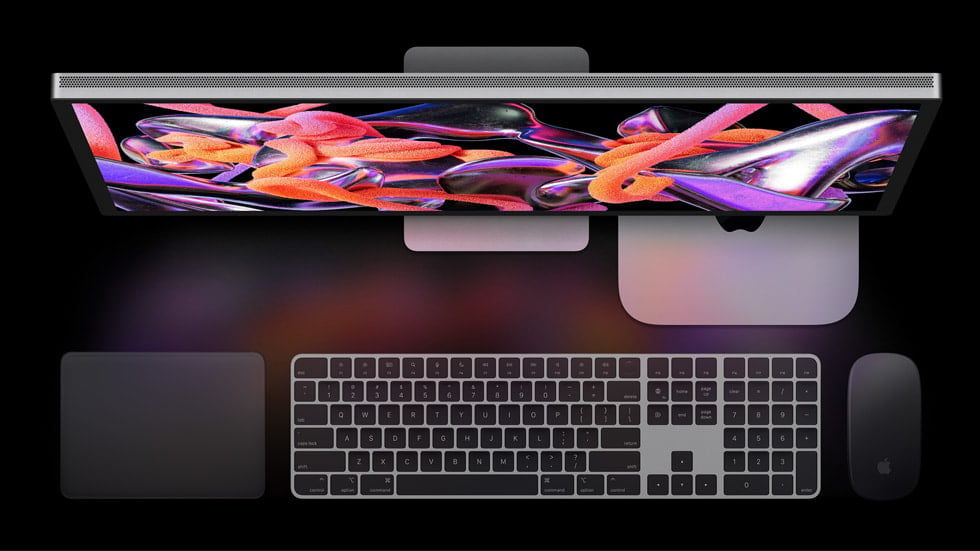
Image Credit: Apple
It has stood the test of time and, much like many other Apple products, has carved a unique niche for itself.
But is it really as versatile as it might seem? Does its petite frame signify a lack of power and computational performance?
What can one use a Mac Mini for, and is it worth the asking price? Is it only capable enough to handle general productivity tasks or can it, conversely, be used by more demanding workloads?
The Mac Mini was always the cheapest and most straightforward way of getting your hands on macOS and, by proxy, entering the Apple ecosystem.
It was reasonably priced (and still is, for that matter), it could handle numerous different workloads and offered a varied and versatile port selection — alongside Thunderbolt support for external hubs and docks and whatnot.
Intel-based models, while undoubtedly the most popular, weren’t all that impressive. Most of them throttled and got way too loud when under load, which inevitably hindered the entire user experience.
Then came Apple’s own silicon and, needless to say, each and every single fault one could mention got nullified.
And that, in short, is the Mac Mini we’ll be focusing on for this particular piece; it’s also the only one really worth getting in 2023 (and beyond).
We’ll make sure to cover a few nifty use-cases for older Intel-based Mac Minis as well, just in case you have one lying around!
M1/M2 Mac Mini — A Deal Unlike Any Other
Apple’s choice to transition over to its own ARM-based silicon was met with both tremendous praise and some hesitance. It offered a stupendous step forward in efficiency and performance-per-watt, but it also brought a few unique limitations in tow.
This shift in architecture — and the fact that Apple chose not to employ any kind of price hike — means that the M1 and M2-based Mac Minis are essentially the best, most well-rounded computers for under a thousand dollars.
You can build a similarly spec’d PC for the same price, but it’s not going to be as small or as silent, as efficient or as versatile. The ARM-based Mac Mini might not be to everyone’s taste, but its many strengths and benefits cannot be brought into question.
Mac Mini — Versatile Beyond Measure and Packed With Power
The genius of Apple’s Mac Mini is that it doesn’t come with any overly glaring compromise other than, say, the fact that it cannot be upgraded post-purchase.
That’s not a negligible drawback but it is inherent to all Apple silicon devices — and, needless to say, it may well be a worthwhile trade-off given the sheer speed and efficiency which these chips bring to the table.
The Mac Mini is just 1.4 liters in volume. It is astonishingly small and light, and its petite frame makes its computational prowess all the more bewildering.
You can put it on a shelf, use it as a home theater PC, attach it to the back of your monitor or under your desk — the possibilities are endless.
And, perhaps best of all, it’ll never get overly hot or loud. In fact, you’ll rarely, if ever, hear its fan spin. Under full load, the M1 Mac Mini draws around 40W. When idling or doing light tasks? It’s more like 4-7W, give or take.
It is, in short, one of the most well-rounded computers money can buy — an ideal option for all but the most demanding of users.
For a great, in-depth overview into why the original M1 Mac Mini is still worth your time and attention (not to mention hard-earned money), make sure to watch the following video:
What Is a Mac Mini Used For?
The most surprising thing about Apple’s ARM-based Mac Mini is just how many boxes it ticks. It’s astounding, really. It has many different uses, including the following:
General Productivity
Thanks to its incredible single-core performance, Apple’s Mac Mini is essentially a speed demon when it comes to executing everyday tasks.
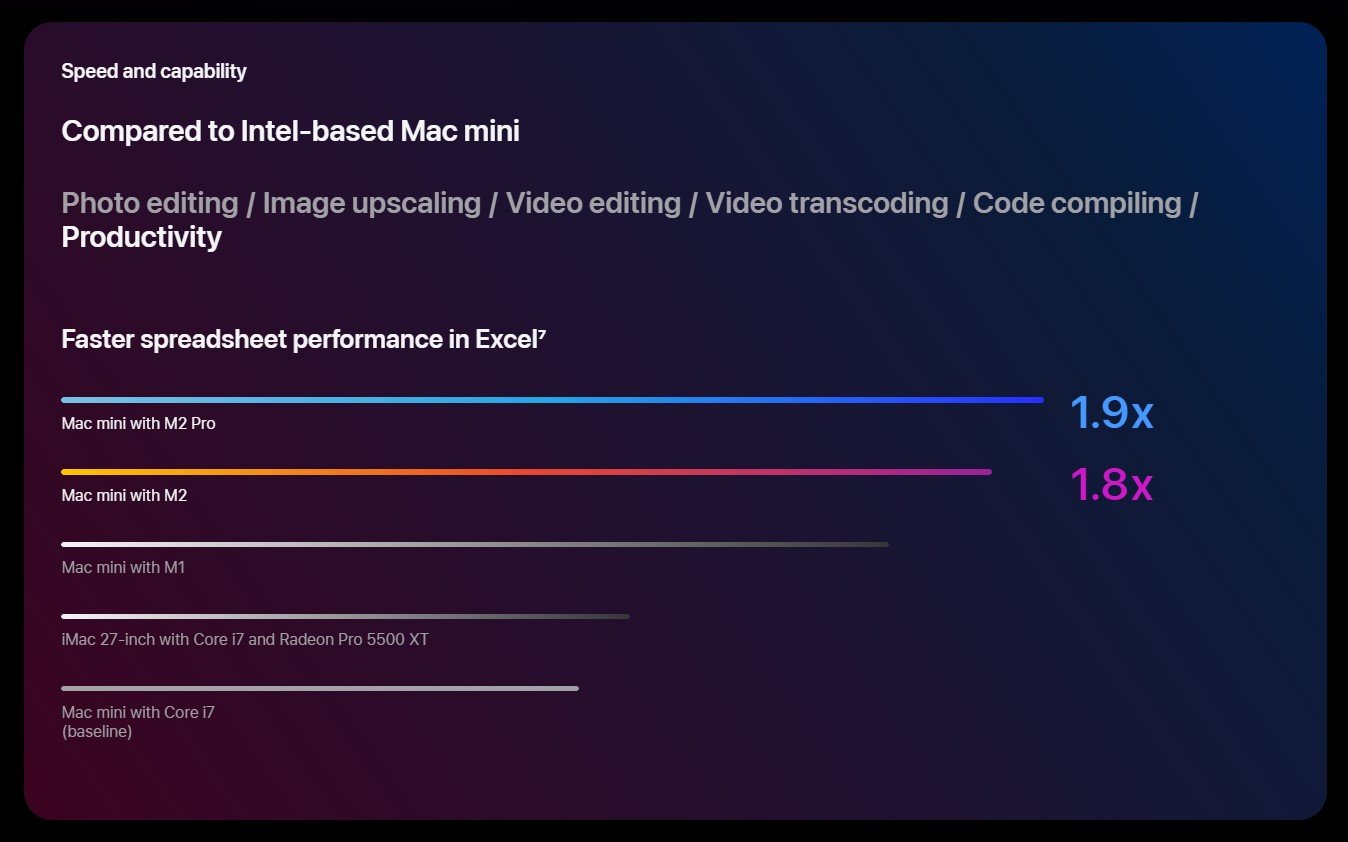
Image Credit: Apple
The fact that macOS is as optimized as it is only further elevates the whole user experience.
Applications open instantly without any perceptible delay, and much of the same can be said for web browsing as well — Apple’s silicon ranks first in the web-based Speedometer test, which means that pages will load faster than on any other (Windows) device or architecture.
Software compatibility issues have also been brought to a minimum.
Everyone seems to have boarded the ARM hype train and the sheer number of natively supported applications and software suites speaks volumes. And even if you do come across a piece of software that has to be emulated, Apple’s Rosetta 2 will handle it without a noticeable drop in performance or speed.
Graphic Design, Photo and Video Editing
Despite its small frame and diminutive power draw, the Mac Mini is actually a veritable beast when it comes to content creation.
Photo editing, graphic design, and video editing — in most codecs and resolutions — is a breeze.
Adobe Creative Cloud tends to work best on macOS and is often more optimized (not to mention packed with a few unique features and additions), and it’s been running a lot better on Apple’s M1 and M2 than it ever did on Intel.
That’s not only due to the sheer quantum leap in performance, but also because of the many architectural benefits and improvements which ARM brought to the table.
Moreover, the inclusion of a dedicated Media Engine for decoding and encoding purposes made the lives of videographers and video editors a lot easier and more enjoyable than they dared dream.
Proxies are a thing of the past so long as you’re editing on an Apple Silicon device.
Source: Apple
And you can do all of this without your computer sounding like a jet engine.
Apple’s own ARM-based devices have been selling like hotcakes and, well, there’s a very good reason why.
They bring numerous advancements to the table, both in terms of performance and efficiency, and they even come imbued with a couple of unique bells and whistles, most of which can not only be harnessed by creative professionals but regular users as well.
Music Production
In addition to handling all forms of visual creation with aplomb, the Mac Mini is also a spectacular device for music production as well.
Logic, PreSonus Studio One, Bitwig Studio, FL Studio, Ableton Live, Cubase, and many others run natively on Apple Silicon hardware.
If you’re dealing with highly complex projects and many tracks and plugins and whatnot, then do consider upgrading to the M2 Pro Mac Mini. The Mac Studio also warrants a look if you’re as demanding a user as it gets and actually create music for a living.
Not all plugins are natively supported, though, so make sure to do a bit of digging before making any kind of investment. Some plugins can still be run and utilized thanks to Rosetta 2, but others might not work at all. Your mileage will vary.
To see how the M2 Pro Mac Mini performs in this scenario, make sure to watch the following video:
Software/Web Development
The Mac Mini is also a killer option for software/web/iOS developers. It’s not omnipotent, but it sure does punch way above its weight class.
Now, seeing how there are many different kinds of developers and use-cases, it would definitely be advisable to roll up your sleeves and do a bit of digging. In some cases and scenarios, a Windows device would still be preferable.
Going with 16GB of RAM is basically a must if you plan on running Windows through a virtual machine. And, needless to say, make sure to check whether the programs you need most can run natively or not.
If you’re interested in seeing a “programmer’s review” of the M2 Mac Mini, make sure to watch the following video:
>
PLEX, HTPC, Home Server, etc.
You can also use your Mac Mini for PLEX purposes, you can set it up as an HTPC/media server, a NAS, and so on and so forth.
A Mac Mini really is one of the most versatile devices in Apple’s line-up, and, as such, has many unique use-cases — regardless if it’s a brand-new ARM-based one or an Intel model from a few years back.
A Mac Mini can easily be repurposed and put to good use, even if it no longer has the computational prowess to satisfy one’s daily needs.
All in all, it has many more uses than one would expect.
What You Can’t Use a Mac Mini For
The Mac Mini, while certainly a spectacular device, does have its limitations — most of which are hardware-based.
If you’re a 3D artist, modeler, architect, engineer, or animator, Windows is still your best (if not only) option.
That might change in a year or two’s time but there are never any guarantees. Software compatibility issues are the main hurdle, but at least that’s somewhat easy to solve.
Image Credit: isapplesiliconready
Developers are well aware of the sheer prowess and potential of Apple Silicon — hence the faster-than-expected adoption rate.
Ditto for gaming, running Windows through BootCamp, or harnessing an external graphics card (or eGPU for short). You might not care much for these things but for some, they’re pretty big deal-breakers.
The thing is, some of those workloads can be tackled on an ARM-based Mac Mini. It won’t be a perfect experience by any stretch of the imagination, but certain programs have been ported and can now run natively.
The issue arises when you have to utilize and harness a broad range of software suites and certain niche applications, most of which have not (and most likely will not) be updated to support Apple Silicon hardware.
And so, with all of that being said, make sure to do a bit of digging before making any kind of purchasing decision.
For all you know, your main programs may well be fully supported at the time of this writing. Or, conversely, maybe none of them have yet been updated, in which case going with a Windows PC would be your only viable option — for the time being, at least.
Conclusion
Apple’s Mac Mini is a device unlike any other. It is a triumph, really, as it marries both incredible performance and jaw-dropping efficiency.
The fact that it’s as good as it is while still occupying no more than a measly 1.4L of volume — with minimal if any, fan noise — is an engineering marvel.
It can be used for general productivity work, for content creation, software development, and a myriad of other workloads and use-cases and is, as such, astonishingly well-rounded. The fact that it’s also as cheap as it is only further sweetens the deal.
There’s really nothing to complain about, other than the non-existent upgradeability, lack of GPU-related horsepower, and a few software-related quirks and (potential) compatibility issues.
Those are no small hindrances and limitations, but the Mac Mini’s strengths are so plentiful, so abundant and clear, that those flaws are pretty easy to forgive.
Apple’s Mac Mini is essentially the cheapest, most well-rounded work-from-home computer money can buy. It’s incredibly small, efficient beyond measure, and actually more powerful than its petite enclosure would suggest.
It’s essentially all one needs to get one’s work done, and its stellar selection of ports means that you won’t need to make an additional investment on a dock or hub of some kind. Just add your own keyboard, mouse, and monitor, and you’re good to go.
FAQ
Let’s go over a few potential questions you might have regarding Apple’s Mac Mini and all that it entails:
What Is a Mac Mini Used For?
Apple’s Mac Mini is a spectacular small form factor computer that’s a stellar option for nearly everyone other than 3D artists, modelers, animators, and gamers.
It’s essentially the most well-rounded computer for the asking price — and that’s not even up for debate. It’s astonishingly small and yet powerful beyond measure; a combination seldom seen.
And so, if you’re a graphic designer, photo retoucher, video editor, music producer, or software developer, buying an ARM-based Mac Mini is essentially a no-brainer.
The fact that Apple didn’t increase its price — despite imbuing it with more capable internals and a novel architecture — only further sweetens the deal.
The Mac Mini was and still is the cheapest, most straightforward way of entering the Apple ecosystem, and, despite its few quirks and limitations, it sure is worth its weight in gold.
Can I Upgrade the Mac Mini?
Apple’s M1/M2 Mac Mini can not be upgraded whatsoever. Each and every single component you’d potentially want to replace or upgrade is soldered onto the motherboard, including the CPU, GPU, RAM, storage, and so on and so forth.
That’s why it’s so important to be mindful of your workflow and overall needs before making any kind of purchase decision.
You should definitely opt for the 16GB SKU and then, if the need arises, “upgrade” your Mac Mini’s storage through a third-party hub with a built-in M.2 slot.
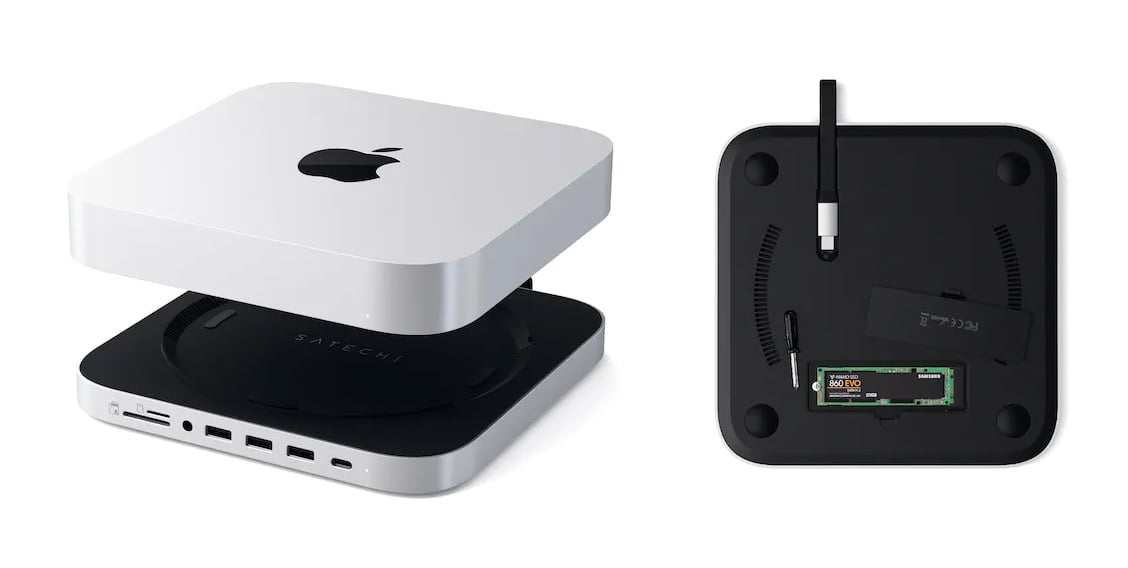
Image Credit: Satechi
It’s not an ideal option, granted, but it sure has its benefits.
Is the Mac Mini Good for Content Creation?
Apple’s Mac Mini is, without a shadow of a doubt, the best computer for content creation in its price range and, in fact, it punches way above its weight class.
There are many different creative workloads in which it excels at, including graphic and UI/UX design (due to its incredible single-core performance), video editing (due to it having a dedicated Media Engine for encoding and decoding various different codecs), motion graphic design, photo editing, and everything in between.
It doesn’t shine all that bright in GPU-heavy workloads and applications like 3D modeling, rendering, CAD work, and animation.
The programs and software suites that can run natively on Apple Silicon are all blazing fast. Those that aren’t, however, chug along at an acceptable — if middling — pace.
That being said, there’s no other computer on the market that excels at so many things as the Mac Mini for the same amount of money.
M1 or M2 Mac Mini — Which Is Better?
That’s a very hard question to answer as they have more similarities than differences. The M2 is better and more capable but, odds are, you’re not going to notice any kind of performance upgrade during your day-to-day usage.
The biggest issue with the base M2 model is that it comes with just a single NAND chip for storage instead of two; this has resulted in half the read and write speed of its predecessor.
To fully alleviate this “issue,” you’d have to go with the upgraded 512GB SKU, at which point — assuming you opt for 16GB of Unified Memory as well — you might as well splurge a bit more and get the M2 Pro model.
In any case, if you can snag the original M1 Mac Mini at a discount or refurbished, then you need not think twice. It’s still a spectacular little device that is only negligibly less performant than its successor.
Over to You
What are your opinions on Apple’s ARM-based Mac Mini? Would you ever buy it or is its very architecture still keeping you (and your wallet) at bay?
Let us know in the comment section down below and, in case you need any help, head over to our forum and ask away!
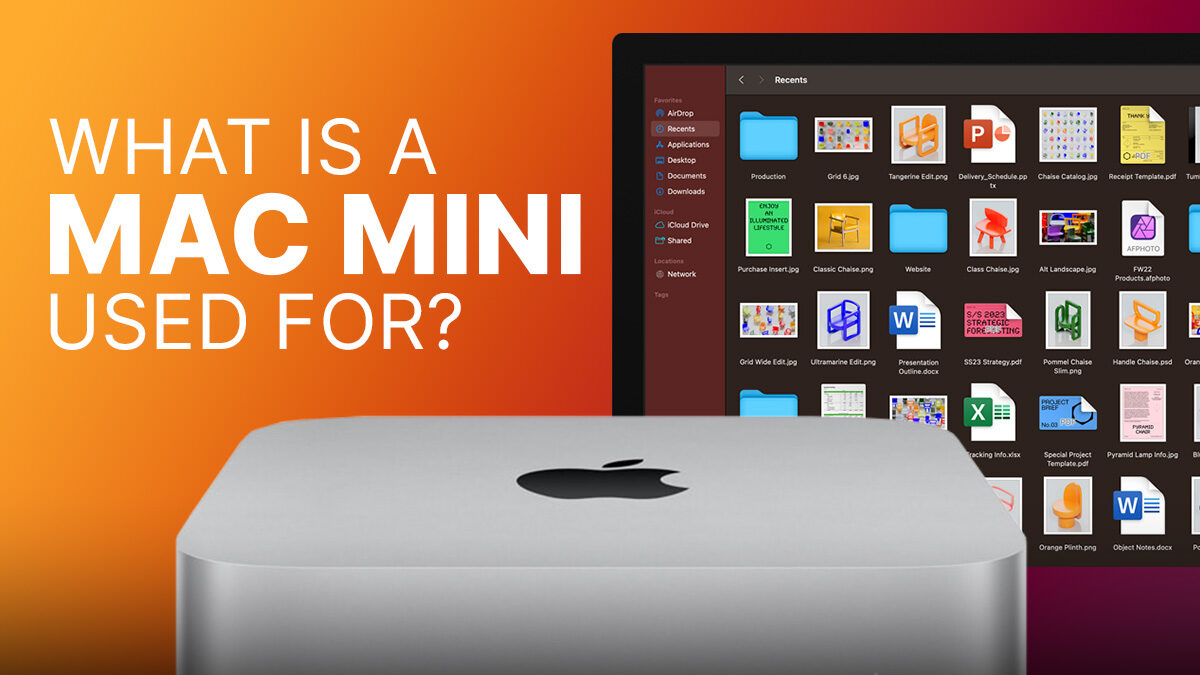
![How to Shut Down Applications in macOS [The Easy Way] How to Shut Down Applications in macOS [The Easy Way]](https://www.cgdirector.com/wp-content/uploads/media/2024/01/How-to-Shut-Down-Applications-in-macOS-Twitter-594x335.jpg)
![How to Open the Task Manager on Mac [Activity Monitor] How to Open the Task Manager on Mac [Activity Monitor]](https://www.cgdirector.com/wp-content/uploads/media/2023/10/How-to-Open-the-Task-Manager-on-Mac-Activity-Monitor-Twitter-594x335.jpg)
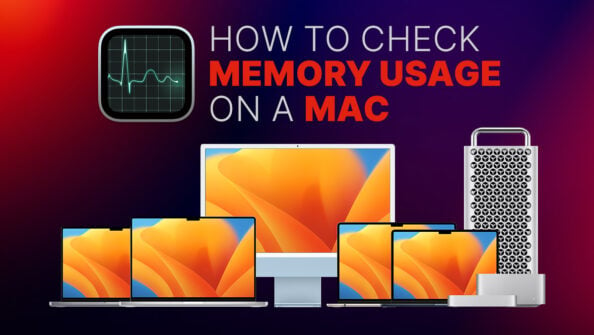
![Best Mac Studio Alternatives in 2023 [Cheaper & Faster] Best Mac Studio Alternatives in 2023 [Cheaper & Faster]](https://www.cgdirector.com/wp-content/uploads/media/2023/01/Best-Mac-Studio-Alternatives-Twitter-594x335.jpg)

0 Comments